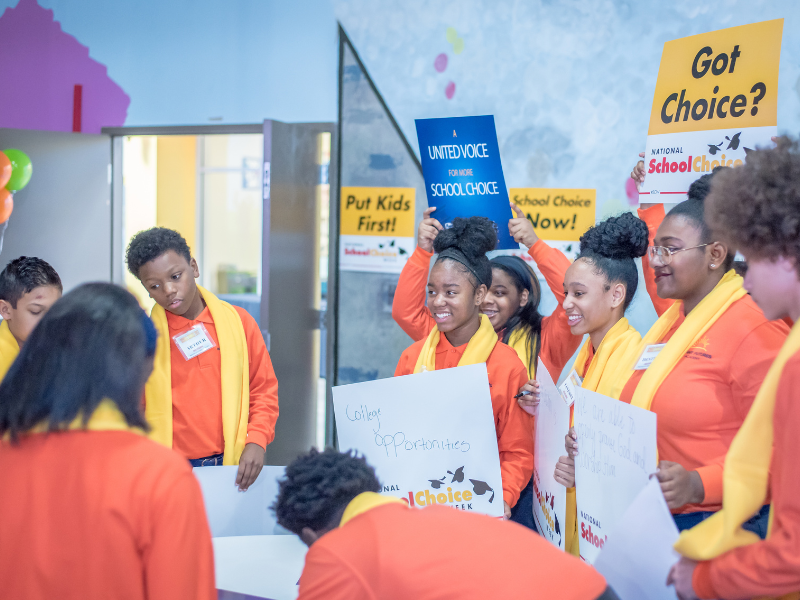
The Marriage Penalty: A Barrier to Relational Support and Better Opportunities for the Poor

The Marriage Penalty: A Barrier to Relational Support and Better Opportunities for the Poor
Key Points
-
A lack of connection and supportive relationships, especially at home, is a driving factor of long-term poverty. Marriage is one type of relationship that research has shown to be a building block of stable lives and communities.
-
Communities in Georgia and beyond are struggling with a barrier called the marriage penalty—a government tax policy that forces couples to pay more in taxes as a result of increasing household income through marriage.
-
The marriage penalty tax discourages those in poverty from improving their financial situation and forming strong support systems at home.
Strong relationships are a cornerstone of vibrant communities. Of the many types of relationships in day-to-day life, research shows that marriage is one of the most important for empowering individuals, regardless of race or circumstance, to avoid long-term poverty and find stability and opportunity.
But communities in Georgia and beyond are struggling to reap the benefits of marriage—and a big reason is a government tax policy called the marriage penalty.
Why does marriage matter for those in poverty?
We celebrate marriage because it provides people with relational connection and support. When we think about helping someone escape or avoid long-term poverty, we might assume that a person’s economic needs are most important to address. But that would be missing a critical piece of the puzzle.
A lack of connection and supportive relationships, especially at home, is a driving factor of long-term poverty.
Those in poverty often need this relationship and support system to a greater level, which is why we at GCO emphasize the benefits marriage offers for individuals, children, and communities. Higher marriage rates tend to go hand-in-hand less crime, better education outcomes, less child poverty, and more upward mobility.
Of course, not every person will get married, but the impact that close, healthy relationships have on the stability of lives and communities cannot be understated.
The impact that close, healthy relationships have on the stability of lives and communities cannot be understated. In fact, it’s one of the biggest factors in helping people overcome long-term poverty.
The impact that close, healthy relationships have on the stability of lives and communities cannot be understated. In fact, it’s one of the biggest factors in helping people overcome long-term poverty.
Understanding the marriage penalty tax
A marriage penalty occurs when a couple faces higher taxes as a result of marrying and filing jointly. Higher taxes are linked to higher income, so it might seem like the marriage penalty is simply an inconvenience for households with high enough earnings to afford it.
But the marriage penalty poses a significant problem for low-income households, as well. It creates a financial risk if one or both spouses are receiving government benefits and getting married would increase household income. That increase can trigger a sudden loss in benefits—even if households aren’t fully earning enough to offset the loss. This scenario holds particularly true for couples who earn a modest income—those in the working class or lower middle class earning around $28,000 to $55,000 a year.
Marriage penalties apply at the federal tax level, but there are 15 states that also have marriage penalties built into their state income tax brackets. Georgia is one of them.

Marriage penalties stifle financial independence
The gap between the “haves” and the “have nots” has increased when it comes to marriage. While the wealthy and upper middle class continue to marry at high rates, marriage is far less common among the poor, working class, and lower middle class.
According to data from the 2015 American Community Survey, 56% of adults between the ages of 18 and 55 are married who fall into the upper middle class. That contrasts with 39% of those in the working class and just 26% of those who are poor.
There are many reasons why marriage rates have declined for these groups, but in the realm of government policy, the marriage penalty is one of the most discouraging factors.
For example, a single mom with a few kids would need to find a spouse who earns a significantly higher salary than her in order to overcome the loss of benefits if they chose to get married. In some cases, the penalty is so extreme that she would need to marry someone earning more than $40 per hour—or more than $80,000 annually if full time—to recover from the loss in safety-net benefits like food stamps, refundable tax credits, and medical assistance.
Through a focus group organized by GCO and the Institute for Family Studies, we met Tiana, who experienced this situation firsthand. “I chose not to marry,” she told us. “For one, I get a lot of assistance. I have a disabled child. So being if I did marry or put any other type of income in, I would not qualify for anything.”
More than one-in-10 unmarried Americans whose income falls below the median reported they were not married for fear of losing “access to government benefits,” according to a recent IFS/Wheatley Institution survey. The research indicates that penalties can amount to between 10% and 30% of household income for many families in the poor and working-class income brackets.
Marriage penalties discourage strong support systems at home
The bottom line is that the marriage penalty harms many of the poor who are working and attempting to make a better life for themselves and their families. It does so by discouraging the very thing we know impacts poverty the most—family and relationship formation.
Fewer marriages is bad news for children: Social science research shows, time and again, that children do best in a stable, married two-parent household.
Married households have the lowest poverty rate of any household configuration at just 6.3% in 2020. Meanwhile, one-in-three children live in a single-parent household today, 80% of those households being headed by a single mom. And the unfortunate reality is that single-mom households are the most likely to be in poverty of any family structure in the U.S.—a staggering 34% in 2020, accounting for over 5.1 million children in poverty.
Solutions to eliminate the marriage penalty tax
The ultimate solution to eliminate marriage penalties is federal action to reform how government benefits are structured. However, states can take the lead as they streamline eligibility standards and form individual action plans.
That’s why GCO is hard at work at in Georgia and across the country to educate lawmakers on the perils of benefits cliffs and possible fixes.
At the end of the day, however, government reforms are only part of the solution. The institutions of marriage and family are suffering not only from government obstacles, but also societal challenges. Civil society organizations—such as churches, nonprofits, and schools—are critical avenues for local support and examples of how to cultivate healthy family relationships. While this is not something that government programs can accomplish, classes and curriculum may be incorporated into case management.
Americans deserve a strong safety net that serves as a bridge out of poverty. But no government program or policy should be a barrier to the relationships needed in the places where lives are formed and transformed— in homes and communities.











